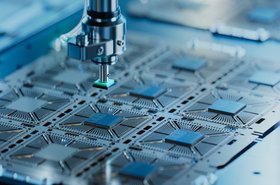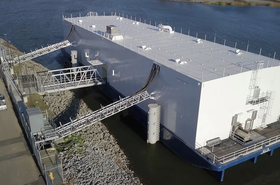The data center industry is experiencing accelerated growth worldwide with the market projected to grow 20 percent annually, thereby doubling in size by 2030 alone.
However, future growth, heightened by AI, won’t be possible without fostering strong partnerships across local communities.
Data centers have traditionally hidden in the shadows, with many communities not fully realizing their true purpose as an integral part of our growing daily online lives. For example, using applications on our cell phones and watching shows and movies on streaming services require data center interaction.
As data centers become more prominent across markets, there’s a heightened need for education on how they operate, their value to society, and their benefits to local communities and economies.
Communities are the most important stakeholders
Local communities play a significant role in data center operations. For data center operators, it’s important to improve communication and collaboration within each market and play their part in breaking down community divides.
Being a good, trusted business neighbor starts with listening to feedback from community decision-makers, elected officials, and local organizations.
From there, operators are better positioned to respond to the communities’ unique needs with tailored solutions and educational opportunities.
All initiatives should tie back to the communities’ priorities. For example, data center operators can work with local decision-makers on philanthropic initiatives, such as sponsoring or participating in local community events and causes. They can also work alongside nonprofit organizations to support local charities and schools which helps drive stronger communities in the future.
Partnering with community decision-makers helps data center operators design mutually beneficial initiatives, such as supporting the local tax base and creating high-value long and short-term job opportunities to fuel economic benefits.
Building the future workforce
The data center industry provides promising career opportunities that will only grow with the rapid adoption of AI.
Creating a new era of innovation, AI will open more job opportunities for skilled workers and while these are jobs of the future, careers in this space are already in high demand. The data center industry is a significant avenue for nearly all job concentrations – from plumbing and electricians to technicians and electrical engineers.
Data centers can also help support employment and training opportunities – whether it means working with local school districts to educate on career possibilities or providing scholarships, grants, internships, and training programs to showcase career pathways for students.
Data center operators can work with programs on a national level as well through Veteran’s and STEM, STEAM, or STREAM (science, technology, research, engineering, art, and mathematics) organizations.
Every community is unique
From Northern Virginia to Silicon Valley, no community is the same and each has its own unique goals.
Data center operators and providers must understand the nuances of each community and deliver expertly crafted, highly specific solutions in response. Additionally, they should engage with communities well before the development process begins to ensure each step of the project accurately considers those unique needs.
For example, the Phoenix market is water-constrained, meaning operators should implement methods to reduce the reliance on the local water supply, particularly with the water usage of the data centers' cooling systems.
Of course, sustainability is a core value across all markets and for data centers, this can mean conserving water, sponsoring local environmental programs and initiatives, or creating waste management programs that reduce landfill contributions.
Data center campus designs can also follow LEED (Leadership in Energy and Environmental) design specifications and provide customers access to sustainable power options. Designing data centers with sustainability in mind has become increasingly critical with AI, given its energy intensity.
Finding new ways to reduce the environmental impact on local communities will be crucial, and eventually, AI can be a tool used to improve campus efficiencies even further.
Community-friendly operations
As data centers enter communities, it should be a priority to keep neighbors top of mind when designing and operating them. For example, during the design phase, focusing on building aesthetics, landscaping, and displaying artwork can help enhance curb appeal.
The good news is that once constructed, data centers don’t dramatically increase traffic or impact population density.
However, during construction, operators should look for ways to reduce traffic, noise, and construction dust. Once operational, it’s important to reduce light pollution by ensuring that exterior data center lighting isn’t invasive to nearby homes.
Being a good neighbor
There’s a tremendous value for data center operators to foster relationships with local government officials and community residents to provide the necessary education and create lasting connections.
As a data center operator, your impact on local communities shouldn’t be underestimated.
Data centers have the power to create a better future for everyone, demonstrate leadership and community commitment, and act as a resource.
When establishing initiatives that address key community issues, everything you do should aim to serve the public good.
No matter how large or small, taking these initiatives will help create a better future for all.







